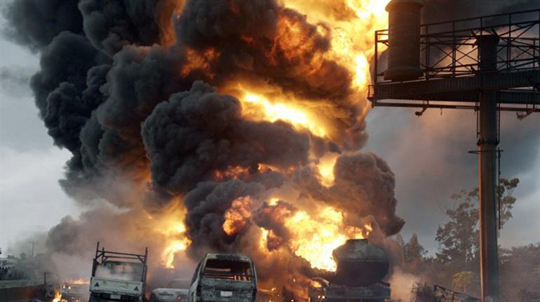Maputo, Nov 18: At least 73 people were killed and scores more injured when an oil tank truck burst into flames in a village in western Mozambique on Thursday, the nation's public radio announced.

"The death toll of the incident is now 73," state-run Radio Mocambique announced, citing authorities in Tete.
"The incident occurred when citizens tried to take petrol from a truck" in the village of Caphiridzange in Tete province, near Malawi, the government said in a statement.
The government added that 110 people were injured, some of them critically. Children were among the wounded, it said.
The precise circumstances of the explosion remained unclear.
Authorities were trying to determine whether the oil tank truck was selling petrol when it exploded, or whether it had been ambushed by residents, information ministry director Joao Manasses told AFP.
A local journalist told AFP the truck had crashed on Wednesday and exploded on Thursday afternoon, as scores of people tried to siphon off fuel.
The government "deplores the loss of life... and is currently providing the necessary assistance in order to save lives and to comfort the victims' families," it said.
Three ministers were due to arrive at the scene on Friday in order to monitor the rescuers' work.
- Widespread poverty, turmoil -
Mozambique is one of the world's poorest nations, according to the International Monetary Fund, and since its 16-year civil war ended in 1992 its population has suffered the consequences of a terrible economic crisis.
The government recently increased the price of fuel, after the value of the local currency -- named metical -- sunk against the dollar.
The southeast African nation is also undergoing a new political crisis, triggered by the former rebels' decision in 2013 to return to arms in order to push for a power-sharing deal with the government.
The current unrest has pitted the so-called RENAMO rebel force against government troops in the centre and the west of the country.
Among the provinces affected by the violence has been Tete, where Thursday's blast occurred, pushing thousands of people to flee across the border to neighbouring Malawi this year.
While many have returned, around 2,500 refugees from Mozambique still reside in Malawi, the UN refugee agency says.
Tete province was also hit by another tragedy in January 2015, when 75 people died from intoxication after drinking traditional beer.





Comments
Add new comment